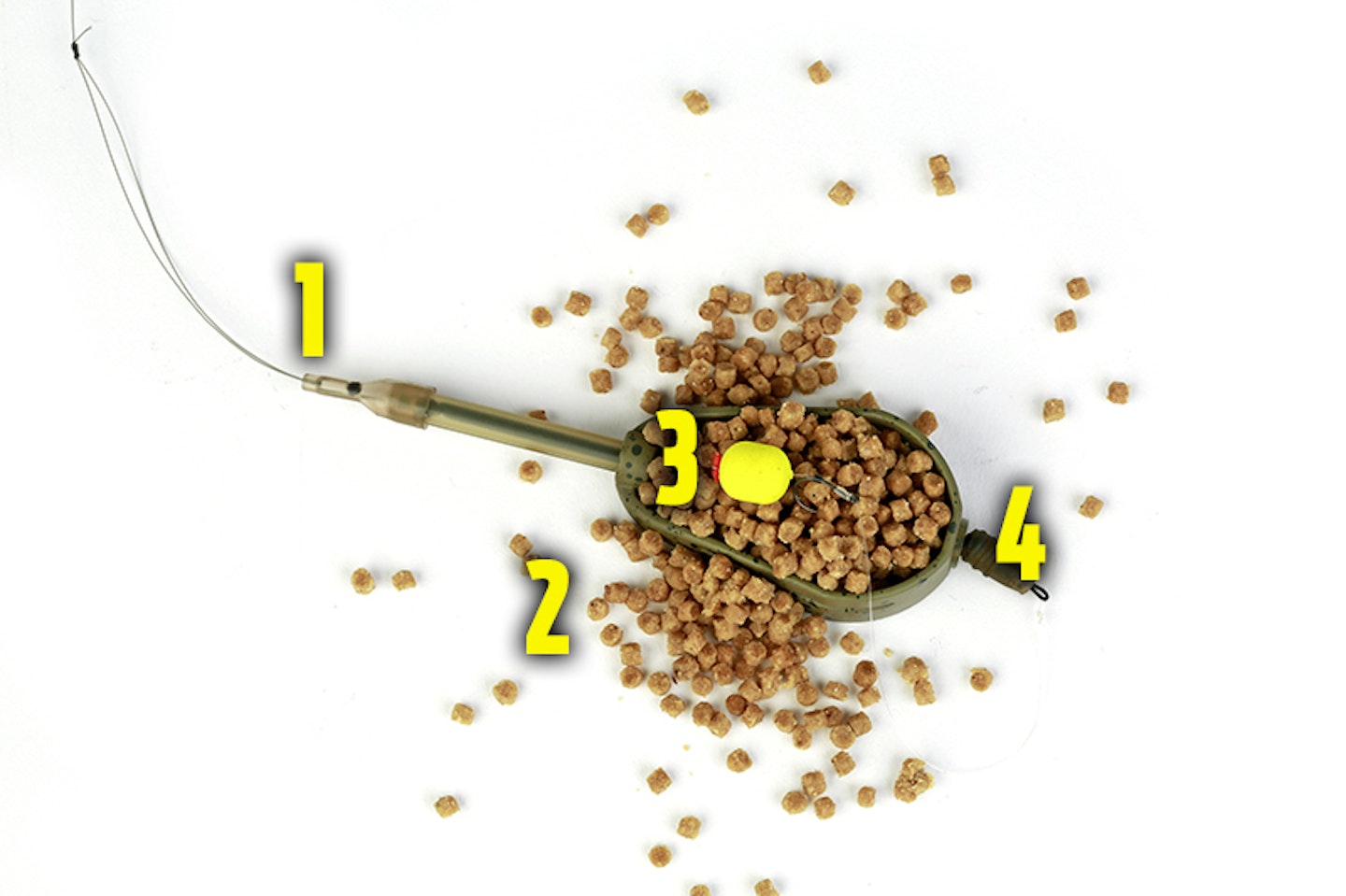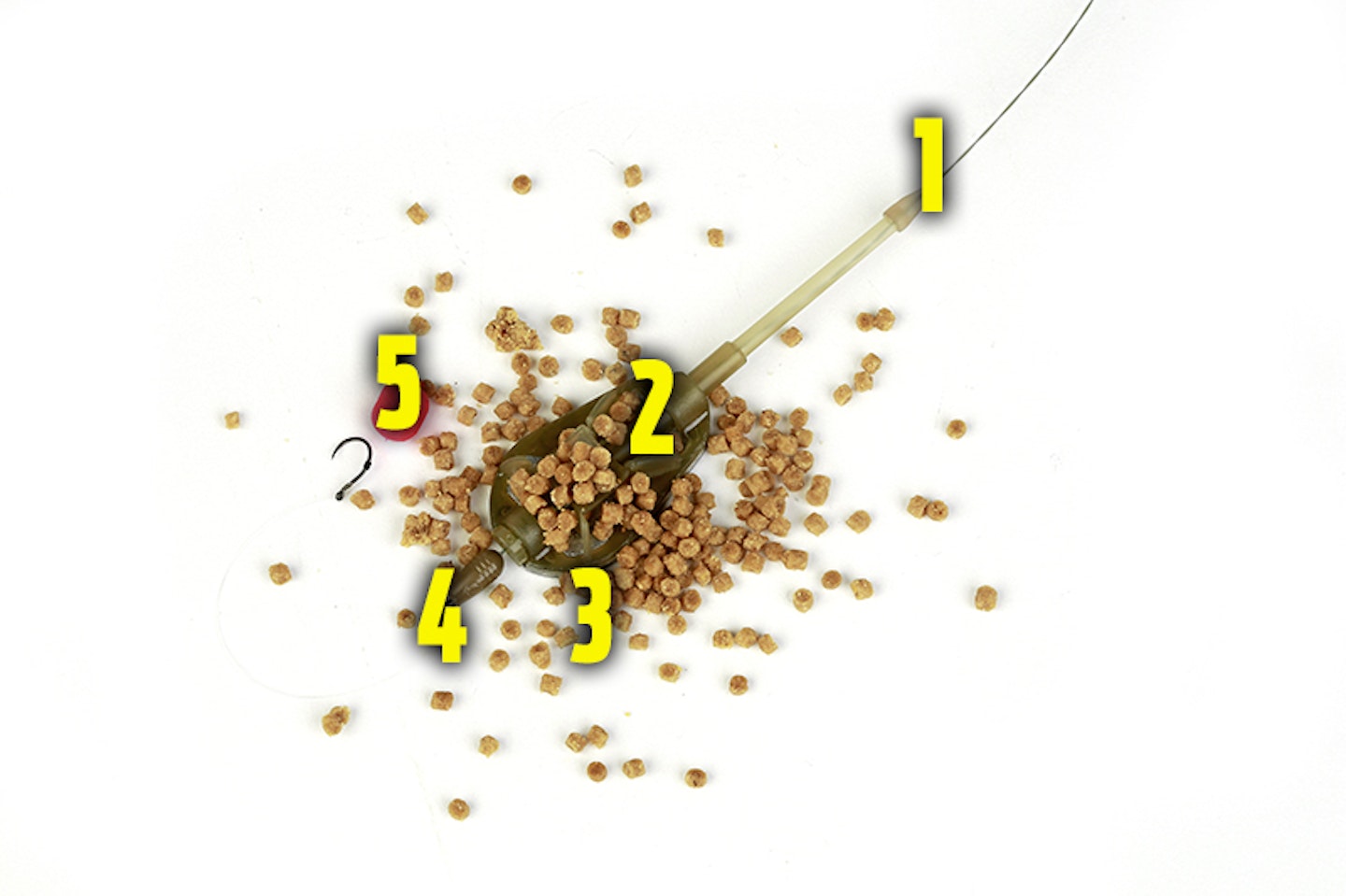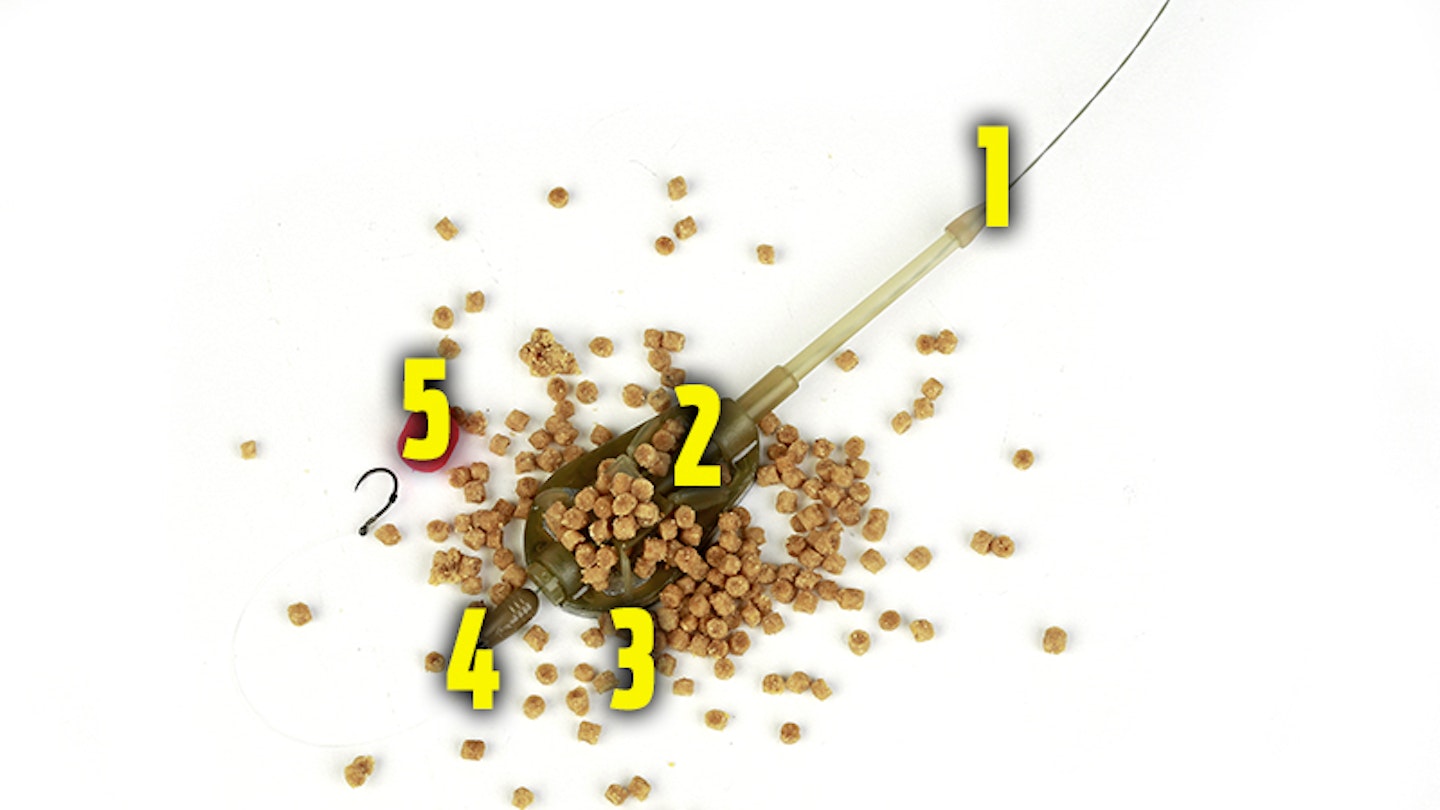One of the questions I’m asked the most is ‘which is better – a Hybrid or a Method feeder?’ It’s no secret to regular readers of this column that I am a massive Hybrid feeder fan, but that doesn’t mean I will dismiss the Method. Both have a role to play on commercials…
HYBRID FEEDER BENEFITS
The design of a Hybrid feeder means the contents of the feeder are better protected when compared to the Method.
With a Hybrid the vast majority of your pellet payload will get to the bottom still attached to the feeder.
For those not familiar with the Hybrid feeder, it’s more enclosed than a Method and features raised sides, whereas a Method feeder is more open and the pellets stick to the prongs.
This basically means that even if a Hybrid feeder doesn’t land quite right on the cast, a percentage of pellets will remain intact, whereas with a Method feeder the chances are they will all be knocked off on impact with the water.
I would also argue that the Hybrid feeder offers a much tighter bait presentation, because everything is kept much closer to the feeder once it hits the bottom.
I actually prefer a tighter bait presentation as this increases the chances of a fish picking up the hookbait. If it’s in a feeding mood it has to eat in a very small area.
Check out Steve Ringer as he puts the Hybrid method to work in his latest Skills School episode.
WHEN THE METHOD RULES
I’ve talked fondly about how good a Hybrid feeder is, but there is one area where I feel the Method can out-fish it – when you really need to attack a peg for a big weight.
The only downside to a Hybrid is that it doesn’t carry as much bait as a Method, so if I need to get a lot more bait down quickly I’ll use the latter.
If you are wondering how to get more bait on to a Method, a great way of doing this is what we call ‘double skinning’.
This basically means loading the feeder in the normal manner with a mould and then adding another layer of pellets to the mould and applying that to the feeder too.
ELASTICATED HYBRID FEEDER RIG

1) MAINLINE
When carp are the target you can’t beat 8lb Guru Pulse line. For elasticated feeders I simply thread a feeder tail rubber on to the line and then tie a 6ins double overhand loop in the end of it. The X-Safe connector then clips to this loop and the tail rubber slides on to the feeder stem.
2) FEED
The Hybrid is perfect for using micro pellets. Fill the frame, compress the pellets, add your hookbait, and cover with more pellets – simple!
3) FEEDER
Whenever possible I use elasticated feeders as I feel they give you a little bit of extra insurance when you get fish around the net. The stretch helps to prevent hook-pulls. I use 36g feeders in three sizes – depending on how much I need to feed.
4) HOOKLENGTH
For mixed bags of skimmers, F1s and carp I’ll use a size 16 MWG hook to 0.17mm line, but I will go as heavy as a size 12 QM1 hook to 0.19mm line for big waters and big fish. A Speed Bead allows me to quickly switch over to different hooklengths with different baits.
INLINE METHOD FEEDER RIG

1) MAINLINE
I use Guru Pulse line in 8lb – a tough line is needed when fishing for big weights and frequent casting. To fish the feeder inline, start by threading it on to your mainline and tie a 6ins twizzled loop in the end of the line, trapping a Guru Speed Bead into the bottom of the loop.
2) FEEDER
The size of feeder is determined by the amount of bait you need to feed. I tend to use the 36g size most often, but will go heavier at long range on big waters.
3) FEED
To me it’s all about using softened micro pellets on the Method. I always give mine a boost with liquid flavourings and colours to make them stand out.
4) SPEED BEAD
A great little gadget that acts as a buffer for the feeder and also lets me change hooklengths quickly.
5) HOOKLENGTH
Four inches is the optimal length for Method hooklengths. I use 0.17mm line to a size 14 or 16 Guru QM1 hook tied with a knotless knot for hair-rigging or banding 6mm pellets and mini boilies.
